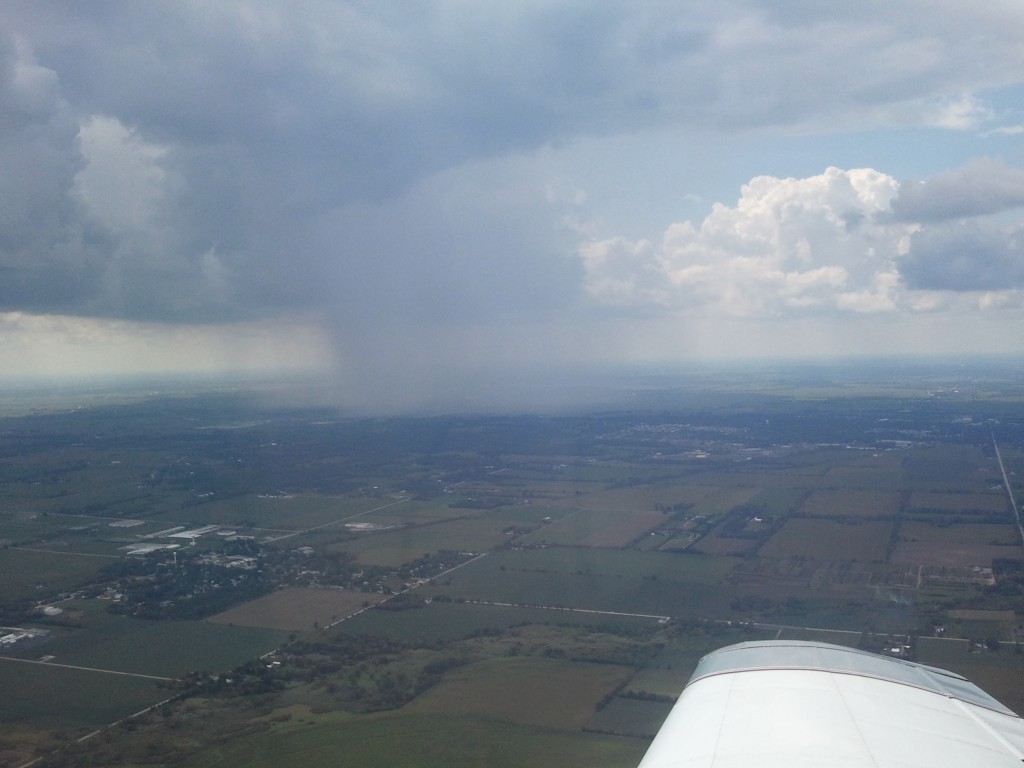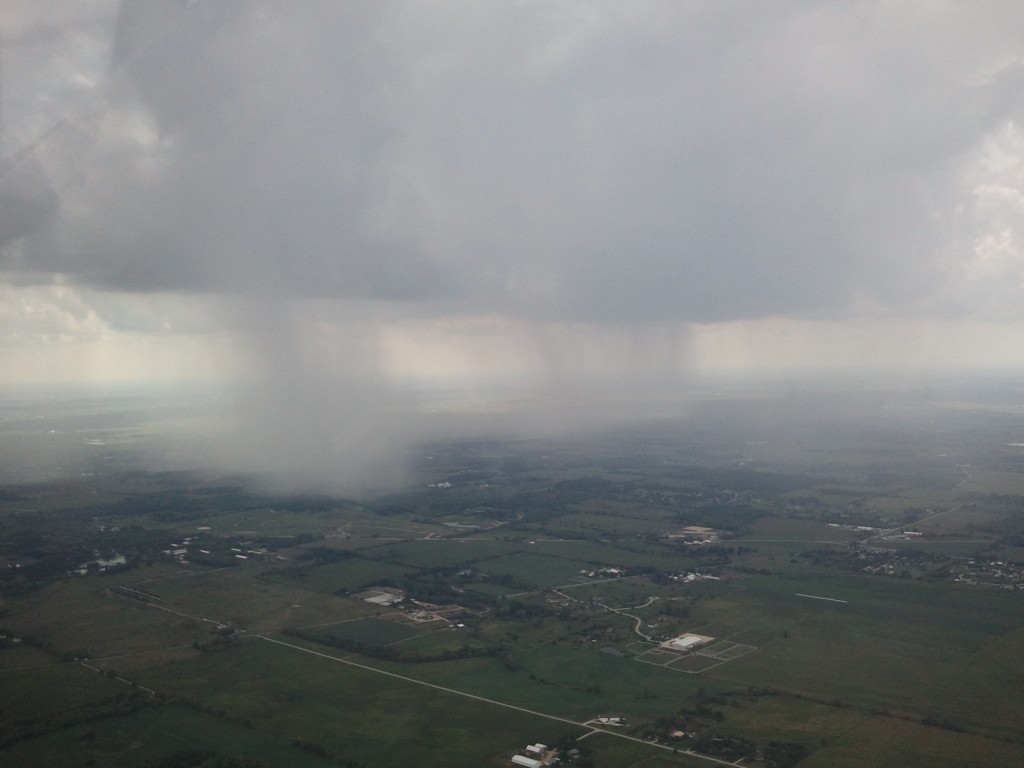I have been asked many times by pilots and student pilot whether it’s ok to fly into rain. There is no problem flying in the rain but it really depends on the type of rain and other factors. Is it a steady rain? Is it showers? You can’t just decide whether it’s ok to fly in the rain based on the type of rain. You need to check all aspects of the weather. You know what your weather minimums are as a pilot. You have certain visibility and cloud clearence requirements that you have to meet. You can’t fly in thunderstorms and should maintain at least a 20 mile distance from the nearest thunderstorm! If it’s raining during a thunerstorm, forget it!
Steady rain is usually ok as long as there are no thunderstorms associated with it, but not always. What I mean by that is how heavy is the rain. Even though rain may not be associated with a thunderstorm, it can lower your visibility quite a bit if you fly through it. In general, if it is raining over a large area, like half the state, then the visibility is probably good. You still need to check the weather to see before you fly though. Where the problem comes in is if there are showers. Showers are more spread out in small areas and are easy to see from the air. They do not cover large areas, but they cover an area of only a few miles. This is a picture of what an area of showers looks like.
Showers like this are NOT good! When I took this picture, it was great visibilty everywhere I looked, except where the showers were. You can see the horizon just fine until you look at the showers. If you can’t see the horizon through the rain, then you won’t be able to see if you fly into it. You could end up with 1 mile visibility or ZERO visibility!
These showers are only covering an area of about 2 miles or less, but they can spread out quickly. They can also fade out just as quickly as they spread. I’ve seen showers associated with a thunderstorm spread from 2 miles to 15 miles in 5 minutes while flying back from Key West Florida in a small plane many years ago! I was pretty nervous and was getting ready to put the plane down on the only road leading through the swap area on my way back if I had to.
It popped up out of nowhere. I was 10 miles miles away at the time, admiring how cool it looked. I thought it was just showers but it ended up being a thunderstorm cell. In just a few minutes, it was twice the size and much closer to me. There were no airports anywhere near me and I was in the middle of the everglades. I was flying over the only road around. I maxed out the power in the plane without exceeding redline. I kept my eye on the storm and kept my eye on the road below me, getting ready to land on it if I had to. By the time it spread out to about 15 miles wide it was only about 5 miles from me. Look at the picture above. These showers are only 5 miles from me but they are less than 2 miles across. Imagine 15 miles across, just as close and it’s a thunderstorm. At this point, I noticed that I was slowly getting farther away. I was 15 minutes from the nearest airport. I called ahead to the airport to see how the weather was there and it was clear sky. By the time I touched down at the airport, it was overcast and raining. By the time I taxied to the ramp, it was pouring rain so hard it sounded like hail. It was thundering really loud too. I had heard 3 other planes talking to the tower too behind me and when I looked back, all 3 landed right in a row behind me in the thunderstorm that I had passed. In 15 minutes it went from clear sky to a heavy thunderstorm. Look at the next picture to see how fast showers can spread out.
These are the same showers as the last picture. In a 10 minute period they spread out to about 4 miles wide. If this was a thunderstorm cell, it would have spread much quicker. Even though it isn’t a thunderstorm, if you were flying too close to it, you may end up flying through it by accident. Even flying through the area to the right side of the picture where you can see through to the horizon could mean a lot of turbulence! I’ve been there, avoiding the main shower shaft, flying in the lighter area. The rain there can be pretty hard and the turbulence enough to make you wonder what the hell you are doing!
My suggestion to you as an experienced pilot and instructor is to stay away from these areas. Keep an eye on them. Watch the direction it’s moving and fly around it on the side it’s moving away from. Dont fly toward it’s direction of travel. If it’s a thunderstorm, stay away by 20 miles or more. If it’s showers, then stay at least 5-10 miles away as long as it’s moving away from you.



I haven’t started learning too much about weather yet but I do know that thunderstorms are nothing to mess with! I’m only a student pilot, but even as a VFR pilot, I can’t imagine wanting to get anywhere near a cloud. Ha!
Nice article Joe. I would love to read more stuff like this. Go/No Go decisions, especially with pictures or graphics (adds screens, radar etc.). Also, articles like this where you discuss decisions you make in flight and why. Cool stuff!
Thnx, I am a student pilot, and the photos help out greatly, very deceptive.